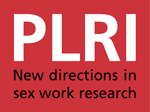HIV prevention
In this study in Pakistan 3350 male and transgender sex workers were surveyed, of which 2694 were included in the study. The average age of respondents was 24.1 years (SD 6.3), and the average duration of sex work was 7.5 years (SD 5.9). Respondents averaged 30.9 (SD 2.7) paid receptive anal sex acts in the month prior to their interview, while 21.5% reported using a condom during their last occurrence of paid anal sex. Of those surveyed, HIV prevalence was 5.4 per 1000; notably, no HIV-positive respondents reported any injection drug use. Article in AIDS Clinic Res S1:002. Purpose: This study examined the social

